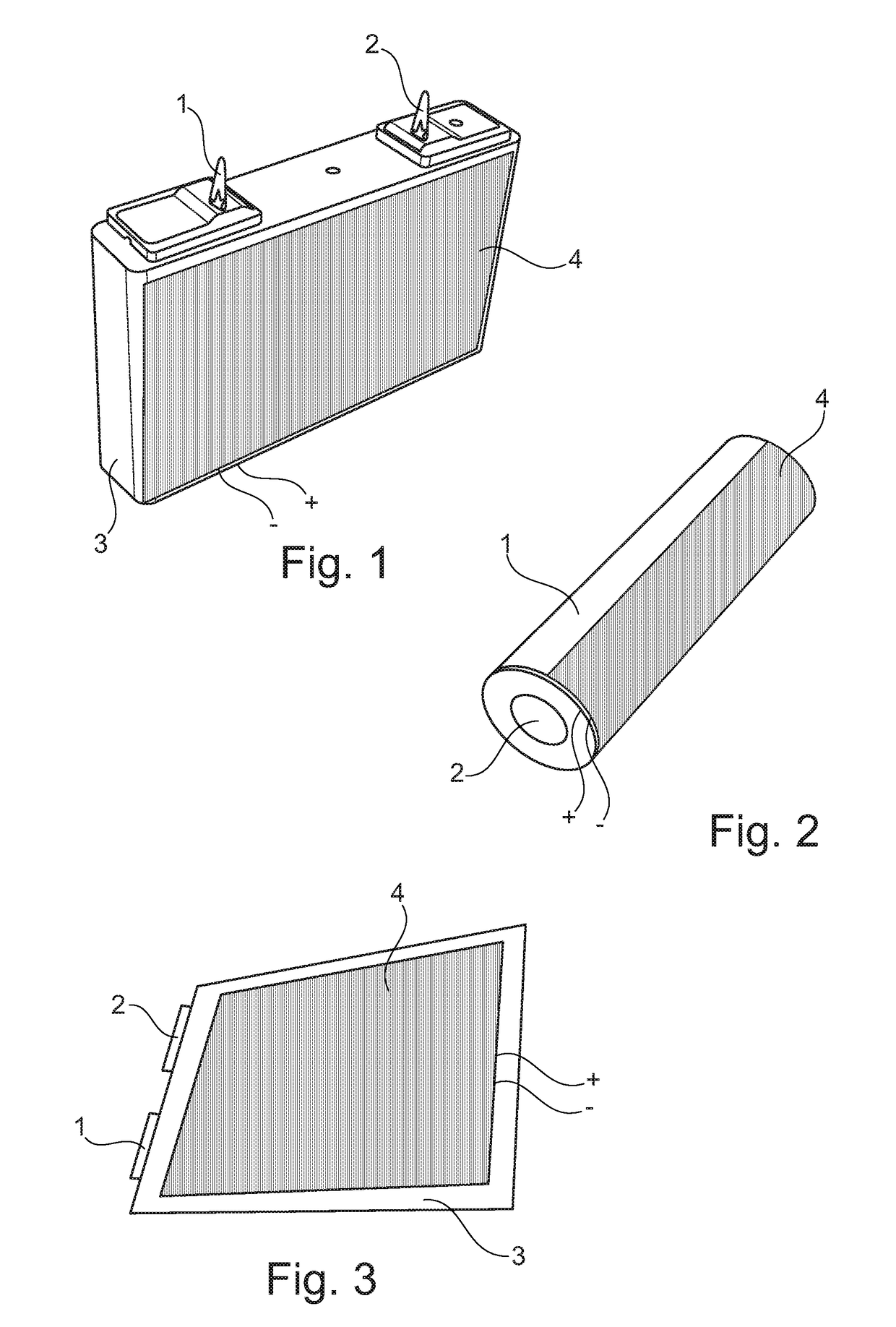Lithium ion battery
a lithium ion battery and lithium ion technology, applied in batteries, electrical equipment, electrochemical generators, etc., can solve the problems of high electrical resistance of ptc polymer, carbon black particles then no longer form electrically conducting chains of sufficient length
- Summary
- Abstract
- Description
- Claims
- Application Information
AI Technical Summary
Benefits of technology
Problems solved by technology
Method used
Image
Examples
Embodiment Construction
[0019]FIG. 1 shows a lithium ion battery comprising a positive electrode 1, a negative electrode 2, a casing 3 containing an electrolyte, e.g. a lithium salt in an organic solvent, and a heating layer 4 provided as PTC polymer. The lithium salt may be lithium hexafluorophosphate (LiPF6), lithium hexafluoroarsenate monohydrate (LiAsF6), lithium perchlorate (LiClO4), lithium tetrafluoroborate (LiBF4), or lithium triflate (LiCF3SO3), for example.
[0020]In the embodiment shown, the PTC polymer heating layer 4 is provided on an outer surface of the casing 3. Another possibility is to provide the PTC polymer heating layer 4 on an inside surface of the casing 3. A PTC polymer heating layer on an inner surface of the casing may offer the advantage of improved thermal coupling. A PTC polymer heating layer on an outer surface of the casing may offer the advantage of an easy electrical connection of the PTC polymer heating layer.
[0021]The terminals for applying a voltage to the PTC polymer heat...
PUM
 Login to View More
Login to View More Abstract
Description
Claims
Application Information
 Login to View More
Login to View More - R&D
- Intellectual Property
- Life Sciences
- Materials
- Tech Scout
- Unparalleled Data Quality
- Higher Quality Content
- 60% Fewer Hallucinations
Browse by: Latest US Patents, China's latest patents, Technical Efficacy Thesaurus, Application Domain, Technology Topic, Popular Technical Reports.
© 2025 PatSnap. All rights reserved.Legal|Privacy policy|Modern Slavery Act Transparency Statement|Sitemap|About US| Contact US: help@patsnap.com


